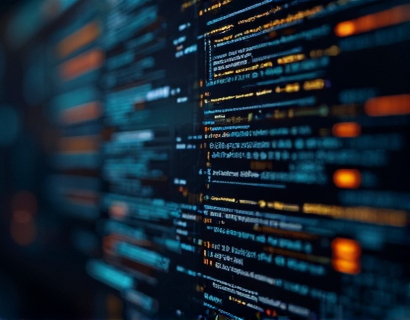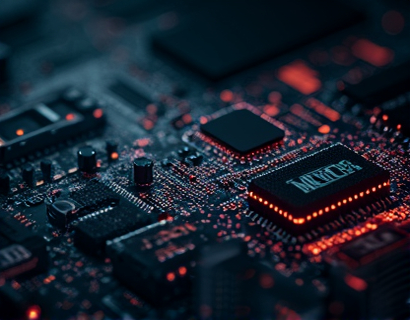Advanced Layer 2 Solutions: Empowering EVM-Enabled Blockchain Development for Scalability and Security
In the rapidly evolving landscape of blockchain technology, Layer 2 solutions have emerged as a pivotal advancement, particularly for those built on the Ethereum Virtual Machine (EVM). These solutions are designed to enhance the scalability, security, and efficiency of decentralized applications (dApps) without compromising the core principles of decentralization and security inherent in EVM-based blockchains. For developers, integrating advanced Layer 2 solutions can significantly transform the development process, enabling them to create faster, more secure, and cost-effective applications.
Understanding Layer 2 Solutions
Layer 2 solutions refer to technologies and protocols built on top of existing blockchain networks, or Layer 1, to improve transaction throughput and reduce costs. Unlike Layer 1 upgrades, which involve modifying the core blockchain protocol, Layer 2 solutions operate within the existing framework, leveraging it to achieve greater efficiency. For EVM-based blockchains, Layer 2 solutions can process transactions off the main chain, only settling the final state on the EVM, thus alleviating congestion and reducing gas fees.
Key Benefits of Advanced Layer 2 Solutions
The adoption of advanced Layer 2 solutions brings numerous benefits to EVM-based blockchain development. Firstly, scalability is significantly enhanced as these solutions can handle a much higher volume of transactions per second compared to traditional on-chain methods. This is crucial for dApps that require high performance and low latency, such as gaming platforms, decentralized finance (DeFi) applications, and social media networks.
Security is another critical aspect where Layer 2 solutions excel. By processing transactions off the main chain, the risk of network congestion and potential security vulnerabilities is minimized. Moreover, many Layer 2 protocols implement advanced cryptographic techniques and consensus mechanisms to ensure that transactions are secure and tamper-proof, maintaining the integrity of the blockchain.
Cost efficiency is a major driver for developers adopting Layer 2 solutions. Gas fees on EVM-based blockchains can be prohibitively high, especially during peak times. Layer 2 solutions reduce these costs by offloading transactions, making it more feasible for developers to launch and maintain decentralized applications without the burden of exorbitant transaction fees.
Popular Layer 2 Protocols for EVM-Based Blockchains
Several Layer 2 protocols have gained prominence for their effectiveness in enhancing EVM-based blockchain development. One of the most notable is Optimistic Rollups, which bundle multiple transactions into a single transaction on the main chain, verifying them through a challenge period. If no challenges are raised, the transaction is considered valid, significantly reducing the load on the main chain.
Another prominent solution is Zero-Knowledge Rollups, which use zero-knowledge proofs to bundle and verify transactions off-chain, providing stronger security guarantees and higher throughput. These solutions are particularly beneficial for applications requiring high privacy and security, such as financial transactions and identity verification.
Plasma chains are another Layer 2 approach that creates a network of child chains, each processing transactions independently before settling the final state on the main chain. This method is effective for applications that require a high degree of parallelism and can handle a large number of transactions efficiently.
Integrating Layer 2 Solutions in Development Workflows
For developers looking to integrate advanced Layer 2 solutions into their EVM-based projects, the process involves several key steps. First, it is essential to choose the right Layer 2 protocol that aligns with the application's requirements in terms of scalability, security, and cost. This decision will influence the architecture and design of the dApp.
Next, developers need to set up the necessary infrastructure, including smart contracts that interact with the Layer 2 network. This often involves deploying wrappers or bridges that facilitate seamless communication between the Layer 2 and Layer 1 networks. Ensuring compatibility and reliability of these interfaces is crucial for a smooth user experience.
Testing is a critical phase, where developers must rigorously test the integration to identify and resolve any potential issues. This includes simulating high transaction volumes to ensure the Layer 2 solution performs as expected under stress. Security audits are also paramount to verify that the implementation does not introduce new vulnerabilities.
Case Studies: Successful Implementations
Several projects have successfully leveraged advanced Layer 2 solutions to enhance their EVM-based dApps. One notable example is a decentralized gaming platform that implemented Optimistic Rollups to handle real-time game state updates and transactions. By offloading the heavy lifting to a Rollup, the platform achieved near-instant transaction confirmations and significantly lower fees, making it highly attractive to players.
Another successful case is a DeFi protocol that adopted Zero-Knowledge Rollups to provide secure and private lending and borrowing services. The use of zero-knowledge proofs ensured that sensitive financial data remained confidential while maintaining the transparency and immutability of the blockchain. This combination resulted in a highly efficient and user-friendly platform.
A third example is a social media dApp that utilized Plasma chains to manage user interactions and content sharing. The Plasma network allowed for high-throughput handling of comments, likes, and shares, ensuring a smooth and responsive user experience even during peak usage times.
Future Trends and Innovations
The future of Layer 2 solutions for EVM-based blockchain development looks promising, with ongoing research and development pushing the boundaries of what is possible. One emerging trend is the integration of Layer 2 solutions with interoperability protocols, enabling seamless interaction between different blockchain networks. This could lead to more robust and versatile decentralized ecosystems.
Another area of innovation is the development of Layer 2 solutions that are fully compatible with upcoming EVM upgrades, such as Ethereum 2.0. These upgrades aim to enhance the scalability and security of the Ethereum network, and Layer 2 solutions that align with these improvements will further boost the capabilities of EVM-based dApps.
Additionally, the exploration of machine learning and artificial intelligence in Layer 2 protocols is an exciting frontier. By leveraging AI, developers can create more intelligent and adaptive Layer 2 solutions that optimize performance and resource utilization in real-time, further enhancing the efficiency of blockchain applications.
Conclusion
Advanced Layer 2 solutions represent a transformative force in EVM-based blockchain development, offering unparalleled scalability, security, and cost efficiency. As the blockchain ecosystem continues to evolve, these solutions will play a crucial role in driving innovation and adoption. For developers, embracing Layer 2 technologies is not just a strategic advantage but a necessity for building the next generation of decentralized applications.










































